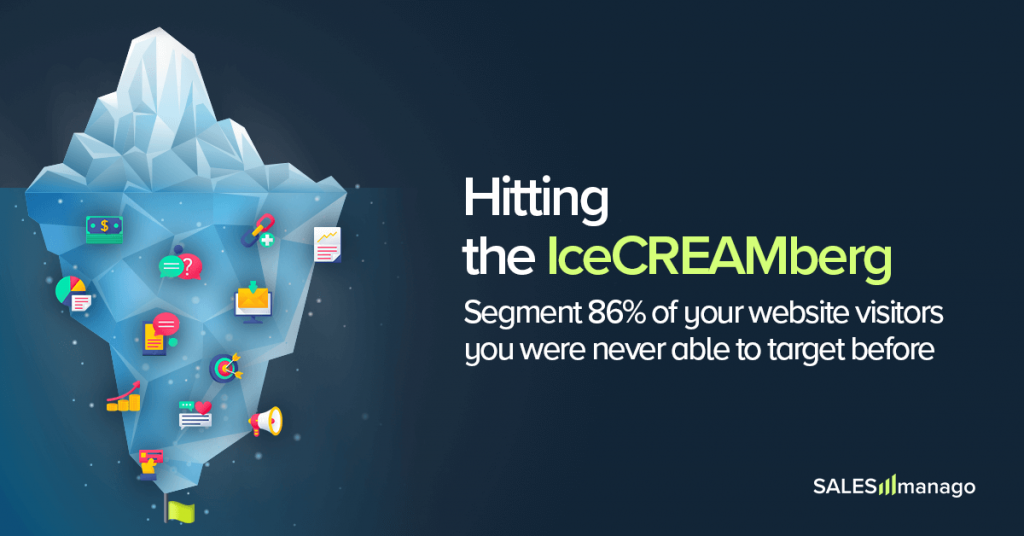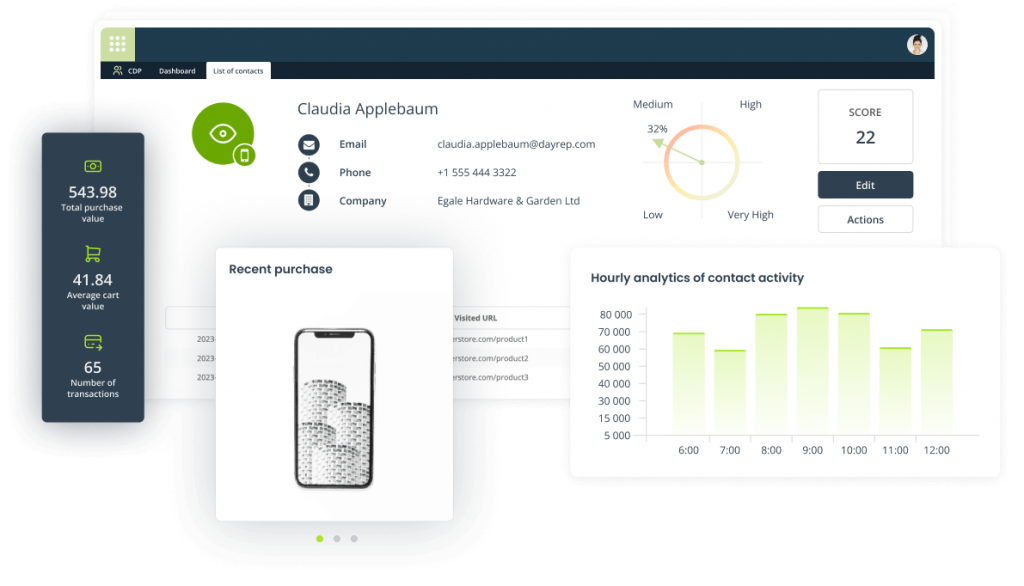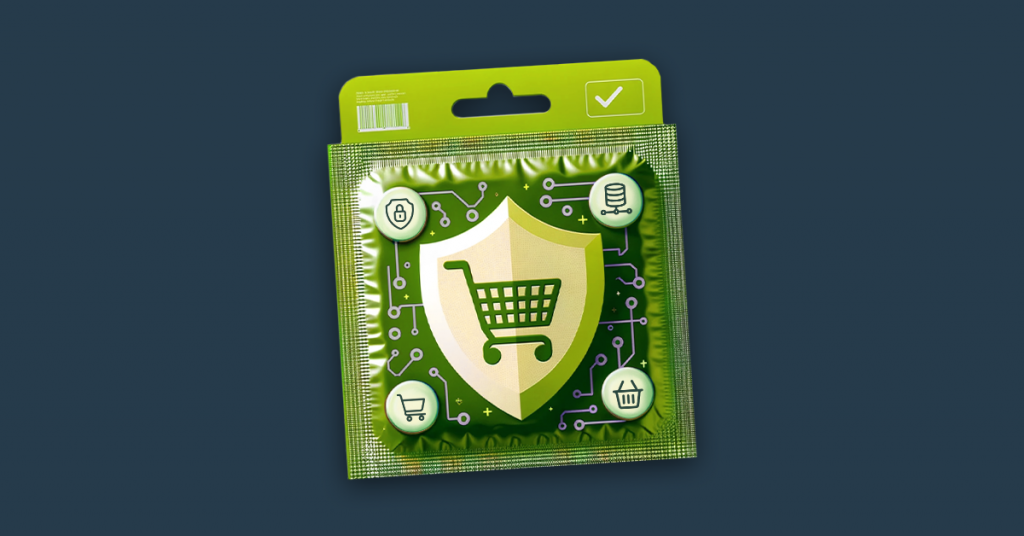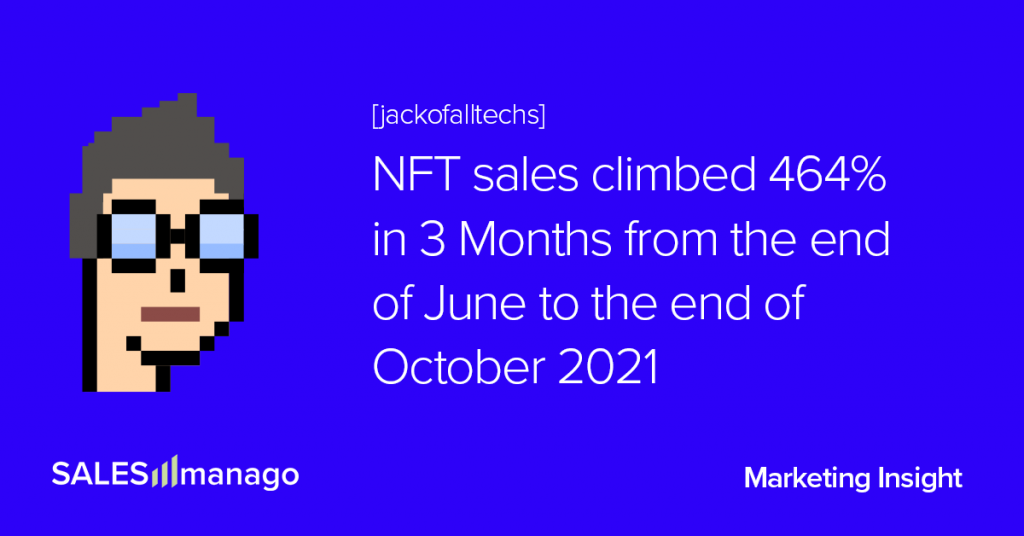
As NFTs market rises, so do uncertainty, if the new technology is really good and able to support a sustainable business model. However, most of the articles in the matter of utilizing NFTs for eCommerce purposes lack the fundamentals necessary to grasp the nature of NFTs. Maybe this is the reason why some eCommerce brands are already making use of NFTs while others only vaguely acknowledge their existence. We decided to explain not only what NFTs are, but where they stem from, to give you a big picture of the chances they provide.
We will also present the examples of industries, that make the best use of them at the end of 2021, the eCommerce brands that seem to take the most out of NFT penomena, and finally, we summarize those success stories to highlight the most distinct NFT traits, that have the potential to change the eCommerce landscape in the near future.
So, let us first talk about the NFTs origins and put them in some context.
NFT in a context. What is DeFi and Blockchain?
There was a good reason for the centralized markets to emerge. It is, after all, much easier for the customers to visit a single location and find everything they need. Sellers have always been better off following customers instead of expecting customers to follow them, even if that means paying a small fee for the privilege of displaying their goods to the wider audience gathered by the market.
Market owners and coordinators always needed the funds for ancillary services to help attract more customers, like decorations, currency exchanges, entertainment, and so on. They also needed to be rewarded for the services they provided.
Due to the vastness of the Internet, online markets have accumulated overwhelming influence and resources, creating an imbalance between them and the sellers. It gave the market owners the possibility to charge very high rates for their accommodations as well as the freedom to choose what sellers are allowed to participate in their market. They also control the flow of customer traffic.
DeFi which stands for Decentralized Finance came up as a way to provide the convenience of centralized markets without the influence of the powerful market owners. DeFi was introduced as a technology, namely blockchain. All of the cryptocurrencies we all know and heard about, like Bitcoin, Etherum and many, many more, are blockchain technology.
To put it extremely simply, blockchain is a decentralized method of storing data that uses peer-to-peer networks. Data is kept in “blocks”. The blocks are chronologically ordered and time-stamped. All the blocks store the data about previous and next block. The values are changed when the transaction occurs. This ensures validity of data and fraud-proof system for transactions.
Blockchain enables permission-less, peer-to-peer transactions. Due to this fact, the blockchain-based market is able to remove the middlemen, like banks and other large financial institutions. Fees, documentation, and legal jurisdictions do not prevent the entities from around the world from accessing the financial tools they need.
The driving force behind a significant portion of DeFi infrastructure are NFTs.
What exactly is NFT (Non-Fungible Token)?
NFT is simply a short for Non-Fungible Token. “Fungibility” in economics means a good is interchangeable. A non-fungible good is not interchangeable. It’s unique.
Non-fungible Token is two things at once. First, it’s a unique digital asset, created and traded via blockchain technology. Second, it’s proof of authenticity. An NFT is both a digital property and evidence that it’s not fake.
To comprehend it, it is best to compare it to a monetary asset. A monetary asset is a fungible token, it can be traded for another asset of the same value. A 10 USD bill can be traded for 10 1 USD bills and the value would not change. What would happen, if i.eg. some celebrity would put an autograph on 10 USD? The bill would suddenly become not exchangeable with any other bill or bills of the same nominal value. It would become unique. Non-fungible.
So the NFTs are blockchain-based digital assets that can be purchased with a digital wallet or cryptocurrency. They can assume the form of an image, video, music, meme or tweet. The difference between NFT and e-book, or digital form of musical albums, is that when the customer purchases an NFT, it means the ownership of a token, not just a licence to use it. The ownership can then be kept or sold to the new buyer.
How NFTs work on the example of art
The NFTs are stored in the second most popular cryptocurrency after Bitcoin, Ethereum blockchain. Ethereum was established as a registry system to enable so-called smart contracts. They allow the transfer of ownership of an NFT. We chose art transfers for our further argumentation, because it provides us with easy-to-grasp examples of the concepts of authenticity and ownership of something digital, as well as the values that may support the will for such ownership.
At present we all probably heard about astronomical sums paid for this NFT artwork or another, and we wonder, why someone would spend millions of dollars on digital piece of art, that can be without a problem obtained for free. Just to be clear, it is not only possible but legal to just copy an image and save it on the hard drive to enjoy its artistic values. It is just it will not be THIS, original piece of art. You will know it, everybody will know it, but there will be no real difference in artistic value, unlike i.eg. weak copy of a painting. And this is actually the problem with digital art.
The NFT concept solved this critical problem. The value of art depends largely on factors like authenticity, age, number of owners. For digital artists, it makes great sense to store unique pieces of art as an NFT in Ethereum. Blockchain ideas end their struggle to prove authenticity.
And this is so much better than, say, print of a digital art, bearing the artist’s signature. Unlike the painting, the physical manifestation of a digital picture will mean less than the original. You can’t i.eg. zoom-in on it to enjoy fine details and the print resolution will never match modern monitors.
On the other side, we have the buyers. Two main groups of consumers of NFT art are motivated by different sets of values.
Art collectors and enthusiasts are drawn to the NFTs because of the personal value they derive from possessing the original piece of art and the fact that their ownership is recognized by their community. So the collectors need the authentication and they self-validate.
Art investors buy and sell art, including NFTs, for profit. Factors like originality, scarcity, ties to real-life events or the author being a celebrity, may influence an NFT value in the future. Knowledge, what piece of art is worth investing in is a part of their trade. Art investors need both authentication and outside validation.
Both are possible with blockchain-based NFTs.
Moreover, artists now have the ability to self-market their work without the traditional middle-men. They control the quantity and visibility of their pieces and can gain in popularity and value quicker than in conventional art launches. Traditional art did not provide the means to track the piece after the original sale. With a digital trail, an artist can make sure that when their work makes money for an investor, it makes money for them too.
The art is just one example of how NFTs can be used. It illustrates that NFT can be a fully-fledged product, desired and paid for for different reasons. And the possibilities that a blockchain structure provides for tracking the transactions as well as how much control it gives the authors over their commodity.
There are now various operational NFTs platforms that can provide you with other opportunities.
Examples of NFT platforms and what they can provide eCommerce with
NFTify
It provides businesses with the possibility of creating an online store without the necessity to write a code. It also adds another layer of protection to an already extremely secure blockchain, in the form of an AI detecting the NFTs similar to those of the user.
Splyt
Splyt enables the possibility to use real world items as NFT. The potential for eCommerce is great in this idea. The inventory data is stored on the blockchain, so no entity listing a particular NFT can sell it twice. Sellers are able to sell physical items as NFT and collect royalties every time the item is resold. Affiliates are able to collect immediate payment after selling NFT products because smart contracts used in Ethereum hold and transfer the funds. For the buyers NFT is a guarantee of the originality of their product. This eliminates the scalping problem. The profits are redistributed in a more equitable way, as the platform itself has built in every guarantee and accommodation traditionally provided by the middle-man. Environment is trustless, nobody needs to trust anyone, as everything is stored in the blockchain.
Pandora
Pandora is another tool turning real world items into NFTs, providing the users with a mix of eCommerce and DeFi. The NFTs on this platform can be treated like financial assets: purchased, sold as well as borrowed and even divided into pieces, that in turn can also become a subject of trade. NFTs can also be stored on the platform to gain a bonus over time.
Drops
Drops is a full DeFi solution, utilizing the fact that NFT assets can sometimes have difficulties finding a buyer. Inactive NFTs can be turned into assets allowing borrowing cryptocurrency. In the bank-like environment, some users bargain with their assets for cryptocurrency, others put their currency in a pool for other users to borrow. The efficiency of the blockchain guaranties makes the process cost very low and individuals are able to perform the operations normally reserved to institutional level banking.
What are NFTs used for now?
There are a number of industries utilizing NFTs for some time now. Let’s have a look at some of the most prominent examples.
Art
I will not discuss this example in detail, since it was analysed before in this article. To previously mentioned advantages of NFTs for digital artists, we only add convenient fractional ownership of the NFT. Thanks to this, thousands of people may collectively purchase a piece of art in separate tradable units.
Music
NFts are no less popular in the music industry than they are in visual arts. Over the years, the music industry moved from CDs to digital downloads, then streaming services came up. All these had one in common, a long line of middle-men. Their accommodation and support reduced profit margins for artists.
Now the artists can sell their music in a D2C model, in a form of fractionalized tokens. Deadmau5, Grimes, 3Lau, Jacques Greene, Tory Lanez and Kings of Leon have all sold NFTs relating to their works in the past year directly to their fan base. Some of them decided to sell entire tracks this way, others have created audio loops accompanied by art pieces or video clips.
Sports
Remember the collectibles in the form of baseball cards? In the form of NFTs they have become digital now.
The path was cleared by the NBA and their “NBA Top Shot” project. A collectibles project based on cryptocurrencies allows the fans to trade NFT video highlights in the same way they trade for the rookie cards. There are already registered transactions for hundreds of thousands of dollars for tokenized, unique moments in NBA history.
Also some of the world’s biggest soccer clubs utilize NFTs, i.eg. Barcelona, AC Milan, PSG, Juventus, and Real Madrid have launched NFT projects and are now offering fan tokens for their supporters. Some of these tokens include voting rights. Projects like Sorare allows fans to buy digital player cards and build custom lineups for cash prizes.
Fashion design industry
NFTs serve here as authenticity proof of the designer products. The verification process is simple and involves scanning QR code attached to the label or sale tag. Moreover, the consumers can view the location of factories and sources of raw materials this way.
NFTs are preventing counterfeiting by verifying authenticity through the blockchain. This way the consumers are able to check to see where their luxury handbag was made.
Some brands even create virtual 3D dressing rooms and use NFTs as digital garments.
Gaming
Digital items, skins, weapons, collectibles or maps, sold in individual transactions, are present in games for years now.. Some of these items sell for hundreds of thousands of dollars. And it was always natural that these assets were confined to the game that they originated from. NFTs can change even this and let the players take their favourite items into the other game or virtual collection room.
Moreover NFTs are able to break the ownership structure for such items. Right now, all the in-game assets are prone to be lost, when i.eg. game servers are shut down because ownership of the items belongs to developers. With NFTs items won or purchased in a certain game could be transferable and used in other games.
Community building
NFTs have means to empower the individuals sharing certain passions to form the community and contribute to development of their dream project. NFTs are now contributed to the development of various interest groups and communities, ranging from fan pages to political movements.
Creative examples of NFTs use in eCommerce
Now let’s see, what ideas for NFTs utilization individual brands from various industries come up with before we summarize the core NFT features that are able to boost eCommerce now and in the future.
Nike
Nike was fast to jump on the NFT hype-train. Their CryptoKicks is a system developed to entail physical shoes to the digital versions of the footwear. Digital shoes can be traded for or stored in a digital locker. But this is just the beginning.
The brand came up with the idea of breeding two pairs of digital shoes to create a shoe offspring. The origins of the offspring can be, of course, tracked back on a blockchain. Offspring can be sold as collectible. This is a strong marketing idea, supporting brand’s presence on the modern market and creating revenue at the same time.
Christie’s
Christie’s was the first major auction house to sell a fully digital artwork, Beeple’s Everydays: The First 500 Days in March 2021. This was the most valuable crypto sale in history, reaching a whopping 69 million USD, boosting Beeple to become the third most valuable living artist.
Gucci
Now this is not exactly an NFT project, but it is very close. The brand released a special line of digital-only sneakers. The trading platform for the consumers in under way. Gucci already experimented with virtual try-ons. Next step is a digital-only pair of sneakers. They can never be worn, but at the price of about 12 USD the brand, much like Nike, can seek to increase its presence while still making money out of their marketing campaign.
Of course the value of this, at first glance, outrageous offer will be verified by the market, when the trading app finally hits the stores. Limited editions are likely to go up. Gucci has stated their further interest in exploring the possibilities of NFTs.
NBA Top Shot
Again we talk about the example already given in this article. But we must stress how great this idea turned out to be. Top Shot Moments gathered more than 250 000 NBA fans so far and the website purports sales of over $400 million.
What can NFTs bring to eCommerce in the future?
Zero Fraud
The very idea of a blockchain and the construction of the NFTs on top of Ethereum makes fraud or counterfeiting simply impossible in eCommerce.
Lifetime product tracking as SKUs blockchain-based analogue
NFTs probably have the potential to replace SKUs with blockchain-based analogue. Moreover, NFTs could enable e-commerce data tracking, as users can have lifetime access to every data point across the product’s life span.
Trade barrier removal
NFTs make international trade for digital assets possible without considering restrictions, regulations and politics. It also enables transactions previously reserved to the institutional banking level.
Eliminating Intermediates / more equitable profit distribution / supporting D2C eCommerce model
Additional costs added by intermediaries between buyers and sellers are eliminated by NFTs. So they will support a more equitable profit-sharing system, particularly for emerging brands that are looking to establish themselves in e-commerce. Essentially, they are tailored for the D2C support.
Speed
Due to smart contracts used in Ethereum, the blockchain basis for NFTs, trades can be initiated and validated at unprecedented speeds. Trade requests and offers are validated by computer networks on the blockchain in real-time.
Divisibility
Fractional ownership of assets too expensive for the average consumer allows the producers and artists to sell off their work much faster.
Wrapping up the NFTs at the end of 2021. Which of their features will prove to be a game changer?
What we witness here is still just the beginning of a trend. Yes, according to Jackofalltechs NFT sales climbed 464% in 3 Months from the end of June to the end of October 2021. But it is still not too late to jump on the NFT train.
Most of the brands concentrate on the digital product that cannot become a victim to counterfeiting. But maybe some other, even deeper features, taken straight from the blockchain base, will prove more widely useful. After all, borderless commerce at the speed of light or fractional ownership may be crucial to corporate entities.
And digital SKU analogue and lifetime product tracking opens so many doors and says so much about the customers. After all, from the perspective of the Customer Data Platform operators, NFTs mean more knowledge about the consumers. We will surely take this trend and its ramifications for eCommerce into consideration.




 Follow
Follow


![[New Feature] Shine the light on your hidden visitors with Spotlight](https://blog.salesmanago.com/wp-content/uploads/2024/04/1-9.png)
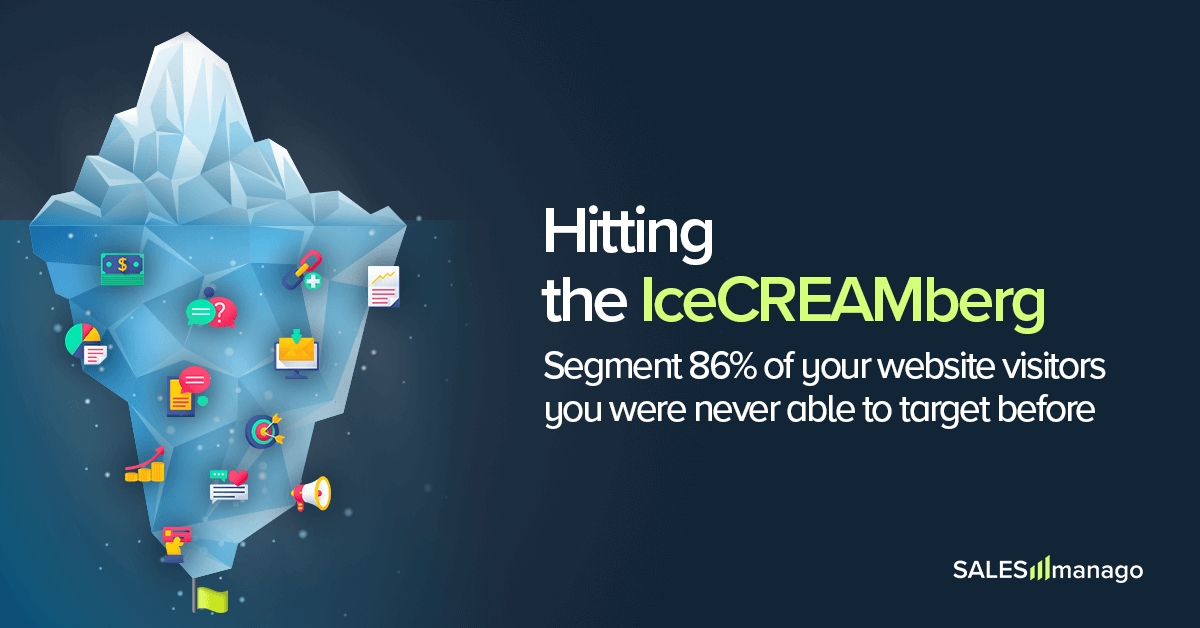

![[New Feature] Unlock Deep Behavioral Personalization with Product Collections](https://blog.salesmanago.com/wp-content/uploads/2024/03/1-3.png)



![[New Feature] Shine the light on your hidden visitors with Spotlight](https://blog.salesmanago.com/wp-content/uploads/2024/04/1-9-1024x536.png)
